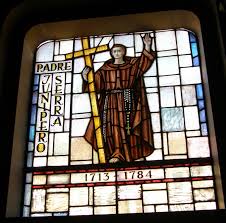Pope Francis will canonize Junipero Serra on September 23 in Washington, DC. It will be the first canonization on U.S. soil and it is controversial. The 18th-century Spanish Franciscan missionary was either a missionary who cared for the natives who converted to Catholicism or a conquerer who forced people to abandon their beliefs and way of life.
For many Native Americans, however, Serra is no saint. The Indians who joined the missions Serra built were forced to shed their own culture, including their religion, dress and food. Thousands of them died prematurely from European diseases.
“It will be a day of mourning for our people,” says Valentin Lopez, chairman of the Amah Mutsun Tribal Band, located along the central coast of Monterey Bay in California.
Lopez said he will be cutting his own long black hair short as a visible sign of his mourning. He and other Native Americans point to Serra’s leadership over a mission system where many were abused and died. Serra “has to be recognized as the architect of the system,” Lopez said.
NPR:
Serra arrived in San Diego in 1769, charged by the Catholic Church with “Christianizing” and “hispanicizing” the native population on behalf of the Spanish crown. He did that within the mission system: self-contained residential complexes where Indians would live, work and worship under the authority of Spanish priests and soldiers. Serra founded nine missions along the coast of California before his death in 1784. Twelve more were erected after his death.
Locals ended up in the missions for a number of reasons. Many came looking for food; the Spanish colonizers brought with them nonnative animals that ate plants and berries crucial to the ecosystem that Native Americans depended on, leaving starvation in their wake. The priests were known to lure people into the mission with gifts. Young men from neighboring areas were also rounded up by Spanish soldiers for agricultural and construction work. However people arrived, they were invariably forced to stay in the missions and adopt Spanish ways of life, stripped of their tribal languages and cultural identities and gradually known as “Mission Indians.”
“People were enslaved in the missions,” says Vincent Medina, 28, assistant museum director at San Francisco’s famed Mission Dolores. “They were whipped if they spoke their language. If they tried to escape, they were forcibly brought back, flogged and punished, and kept in stocks. People were getting diseases. They were horrible places to be.”

